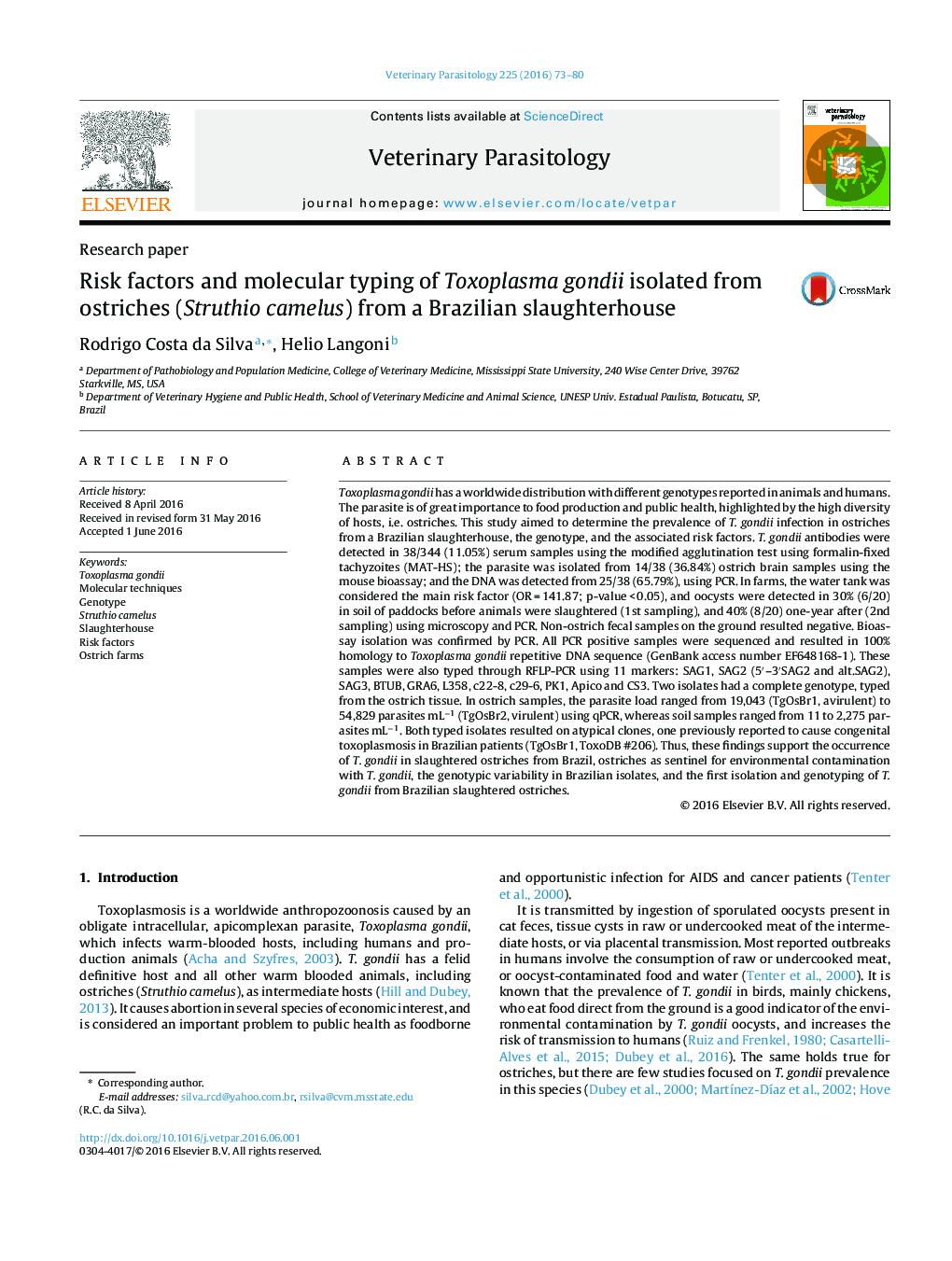| کد مقاله | کد نشریه | سال انتشار | مقاله انگلیسی | نسخه تمام متن |
|---|---|---|---|---|
| 5802121 | 1555651 | 2016 | 8 صفحه PDF | دانلود رایگان |

- T. gondii was isolated from slaughtered ostriches and genotyped.
- Ostriches are important sentinels for environmental contamination with T. gondii.
- Water tanks are an important risk factor and should be considered in farms rearing ostriches for human consumption.
- One ostrich genotype had been previously reported in human newborns (congenital toxoplasmosis) from Brazil.
Toxoplasma gondii has a worldwide distribution with different genotypes reported in animals and humans. The parasite is of great importance to food production and public health, highlighted by the high diversity of hosts, i.e. ostriches. This study aimed to determine the prevalence of T. gondii infection in ostriches from a Brazilian slaughterhouse, the genotype, and the associated risk factors. T. gondii antibodies were detected in 38/344 (11.05%) serum samples using the modified agglutination test using formalin-fixed tachyzoites (MAT-HS); the parasite was isolated from 14/38 (36.84%) ostrich brain samples using the mouse bioassay; and the DNA was detected from 25/38 (65.79%), using PCR. In farms, the water tank was considered the main risk factor (OR = 141.87; p-value < 0.05), and oocysts were detected in 30% (6/20) in soil of paddocks before animals were slaughtered (1st sampling), and 40% (8/20) one-year after (2nd sampling) using microscopy and PCR. Non-ostrich fecal samples on the ground resulted negative. Bioassay isolation was confirmed by PCR. All PCR positive samples were sequenced and resulted in 100% homology to Toxoplasma gondii repetitive DNA sequence (GenBank access number EF648168-1). These samples were also typed through RFLP-PCR using 11 markers: SAG1, SAG2 (5â²-3â²SAG2 and alt.SAG2), SAG3, BTUB, GRA6, L358, c22-8, c29-6, PK1, Apico and CS3. Two isolates had a complete genotype, typed from the ostrich tissue. In ostrich samples, the parasite load ranged from 19,043 (TgOsBr1, avirulent) to 54,829 parasites mLâ1 (TgOsBr2, virulent) using qPCR, whereas soil samples ranged from 11 to 2,275 parasites mLâ1. Both typed isolates resulted on atypical clones, one previously reported to cause congenital toxoplasmosis in Brazilian patients (TgOsBr1, ToxoDB #206). Thus, these findings support the occurrence of T. gondii in slaughtered ostriches from Brazil, ostriches as sentinel for environmental contamination with T. gondii, the genotypic variability in Brazilian isolates, and the first isolation and genotyping of T. gondii from Brazilian slaughtered ostriches.
Journal: Veterinary Parasitology - Volume 225, 30 July 2016, Pages 73-80